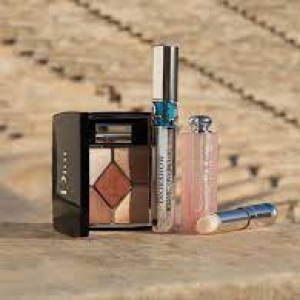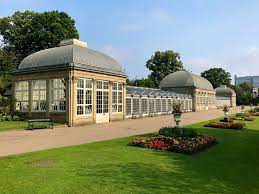Where can you see the world’s oldest pot plant? Or walk from Australia to Chile in two minutes? Here’s our pick of botanical wonderlands, many restored to their Victorian splendour
There are many ways to get some winter heat into your bones. Some countries swear by saunas; others partake of hot springs or sweat lodges. In Britain, however, there is an alternative that doesn’t involve taking your clothes off: the tropical hothouse.
Early practitioners of hothouse horticulture faced formidable obstacles: in the 15th century, alchemist George Ripley suffered death for making a pear tree, “fructify in winter”. It was Victorian gardeners, however, who really triumphed, erecting massive structures and growing rarities like pineapples, bananas and even papayas. Not that things always went smoothly, the Palm House at Kew was opened in 1848, but the curators had managed to kill many of the specimens by 1895 (tinted green glass was a bad idea). Since then, science has ironed out many problems and green technology powers a new wave of fine, steamy hothouses around the country. In addition, some of our best Victorian hothouses have been significantly modernised while keeping the original look.
National Botanic Garden of Wales, Carmarthenshire
Some of the projects begun at the millennium were immediately appreciated: bridges and domes, for example. Others, however, had to wait for plants to mature and are only now reaching their best, among them a fine pair of glasshouses in the National Botanic Garden of Wales. The larger of the two features plants from Mediterranean climates, about 2% of the Earth’s surface, but containing a fifth of the flowering plants found in locations as far apart as South Africa, the Canaries and Croatia. With the temperature generally in the 20s, this is a balmy stroll through the world’s best wine-growing regions. In a couple of minutes you can walk from Australia to Chile. If you’re still a bit chilly, head over to the tropical house, where a biomass boiler keeps things comfortably steamy all year, with bananas and pineapples surrounded by vanilla and strelitzia. The gardens outside were once a famed Regency water garden and, after a £7m restoration, are well worth exploring too.
Winter entry: 10am-4pm (last entry 3pm), adult £12.50
Winter entry: 10am-4pm (last entry 3pm), adult £12.50
Palm House, Kew Gardens, London
Palm House at Kew Gardens, London. Photograph: foto-zone/Alamy
Palm House at Kew Gardens, London. Photograph: foto-zone/Alamy
The epitome of all hothouses is still one of the best. Pride of place goes to the oldest pot plant in the world, the Eastern Cape cycad. Collected in South Africa in 1775, it was sailed back to London where it is currently relaxing after producing a single cone, in 1819. Other specimens include rubber trees, oil palms and cacao trees. If things get too warm, head across to the larger Temperate House, another Grade I-listed marvel. Opened in 1863 and totally refurbished in 2018, it features more than 1,500 species of plant from frost-free regions, including six that are extinct in the wild. One of the rarest trees is another cycad that was moved from the Palm House in 1997 and celebrated by producing a cone in 2004. The tree is actually a cutting taken in 1899 from its only surviving relative, a specimen that grows in Durban’s botanic gardens.
Winter entry: 10am-3pm (last entry 2pm), adult £11
Winter entry: 10am-3pm (last entry 2pm), adult £11
The Glasshouse, Wisley, Surrey
Succulents and cacti on display at The Glasshouse in Wisley. Photograph: Brian Hoffman/Alamy
Succulents and cacti on display at The Glasshouse in Wisley. Photograph: Brian Hoffman/Alamy
Another fine addition to Britain’s hothouse collection was erected to celebrate 200 years of the Royal Horticultural Society in 2007. Highlights include insect-eating pitcher plants, ginger flowers, some rainforest giant trees and an Ethiopian black banana. With waterfalls and three different climate zones, the glasshouse manages to pack a lot into an area the size of 10 tennis courts with a 12-metre-high roof. The temperature is never allowed below a summery 20C, with humidity about 70%.
Winter entry: 10am-3.15pm (last entry 3pm), adult £14.95 or free to RHS members
Winter entry: 10am-3.15pm (last entry 3pm), adult £14.95 or free to RHS members
Belfast Botanic Gardens
The Palm House at Belfast Botanic Gardens. Photograph: RobertMayne/Getty Images/iStockphoto
The Palm House at Belfast Botanic Gardens. Photograph: RobertMayne/Getty Images/iStockphoto
A gem of Victorian engineering, the Belfast palm house was started in 1839, but things really got moving towards the end of the 19th century, when local gardener Charles McKimm took over. He built up great collections of orchids, chrysanthemums and bananas, and added the wonderful tropical ravine, a multi-level fernery that was twice extended to include a waterfall and a lily pond. In 2018 a major £3.8m refurbishment, included triple glazing and a lift, but also restored many original features that had been lost. Now it’s a delightful mix of old grottoes and new viewing platforms, plus lots of tree ferns, bromeliads and orchids.
Winter entry: 10am-3.45pm, free
Winter entry: 10am-3.45pm, free
Sheffield Botanical Gardens
Sheffield Botanical Gardens. Photograph: Andrew Kearton/Alamy
Sheffield Botanical Gardens. Photograph: Andrew Kearton/Alamy
One of Britains oldest and finest hothouses, Sheffield Botanical Gardens opened in 1836 and seem to have been fighting for survival ever since. Repeated cycles of underinvestment and failure were brought to an end with more than £5m of Heritage Lottery funding plus hefty local financial input, allowing the complete refurbishment of its three magnificent pavilions and the rebuilding of the connecting glass walkways. Replanted in 2003, it is now reaching maturity with tree ferns, various palms and some spectacular flowers – the gymea lily from New Zealand sent up a six-metre flower stem last year. The layout gives you a nice long stroll through the world’s hot zones at a guaranteed minimum of 10C.
Winter entry: 10am-4pm weekends, 8am-4pm week days, free
Winter entry: 10am-4pm weekends, 8am-4pm week days, free
Birmingham Botanical Gardens
Birmingham Botanical Gardens. Photograph: Jenny Lilly/Alamy
Birmingham Botanical Gardens. Photograph: Jenny Lilly/Alamy
If the word “hothouse” conjures up visions of steamy verdure, think again. Birmingham’s botanical gardens include an “arid house” that features desert-dwelling plants such as cacti, euphorbias and agave, all kept at a temperature that never drops below 7C. Opened in 1884, it was the third of three large glasshouses; the others feature subtropical and tropical plants. It was in the latter pavilion that two separate tree ferns, one from St Helena and another from Tasmania, got together and produced a hybrid, dicksonia x lathamii, the only one of its kind in the world and now over a century old. There is also a Wollemi Pine, one of the oldest species on the planet, discovered in 1994.
Winter entry: 10am-5pm (last entry 4.30pm), adult £7.50
Winter entry: 10am-5pm (last entry 4.30pm), adult £7.50
Glasgow Botanic Gardens
Kibble Palace greenhouse at Glasgow Botanic Gardens. Photograph: matthi/Alamy
Kibble Palace greenhouse at Glasgow Botanic Gardens. Photograph: matthi/Alamy
The history of Glasgow’s beautiful hothouses is almost as bizarre as some of its floral inhabitants. The giant glass dome was first built by the eccentric John Kibble in 1865, then transported by barge to its current site, where it hosted concerts, religious revivals and political rallies before settling down to housing a fine collection of tropical plants close to the heart of the city. It was fully restored in 2006. Specialities include carnivorous plants, orchids and tree ferns. (Edinburgh’s glasshouse is currently under restoration.)
Winter entry: 12 noon-4pm, free
Winter entry: 12 noon-4pm, free
Eden Project, Cornwall
The Rainforest Biome at the Eden Project, Cornwall. Photograph: Gordon Scammell/Alamy
The Rainforest Biome at the Eden Project, Cornwall. Photograph: Gordon Scammell/Alamy
Opened in 2001, Eden’s interlinked plastic domes are hitting their stride in terms of plant growth these days, with about 5,000 species represented, covering climates from steamy to arid and Mediterranean. The rainforest really does capture the atmosphere of the original, down to jungle birds running around the jungle floor. Plants such as cacao, coffee and rubber tell the economic story of the tropics too.
Winter entry: 10am-4pm week days, 9.30am-6pm weekends, adult £29.50
Winter entry: 10am-4pm week days, 9.30am-6pm weekends, adult £29.50
Bicton Park Botanical Gardens, Devon
Palm houses at Bicton Park Botanical Gardens, Devon. Photograph: Joe Wainwright/Alamy
Palm houses at Bicton Park Botanical Gardens, Devon. Photograph: Joe Wainwright/Alamy
One of the world’s first large glasshouses and still one of the most beautiful, Bicton’s palm house utilises 18,000 glass panels in a sensuous curving design that was completed in 1830. Nearby, the tropical house is home to the Bicton orchid, named after the place where it first bloomed, in 1836. There are also arid and temperate houses.
Winter entry: 10am-4.30pm, adult £12.95
Winter entry: 10am-4.30pm, adult £12.95
Cambridge University Botanic Garden
Cambridge University Botanic Garden. Photograph: Frank Bach/Alamy
Cambridge University Botanic Garden. Photograph: Frank Bach/Alamy
As a working garden for Cambridge’s botany department, this horticultural gem has the responsibility for around 8,000 species, and as you might expect, its seven habitats in a glasshouse range offer an education in themselves. Explore themes such as convergent evolution, carnivorous plant diversity and continental drift as you walk from tropical heat through arid zones and into mountainous climates. Among 73 highly endangered species is the titan arum, which throws up a three-metre-tall flower every seven years.
Winter entry: 10am-4pm (last entry 3.30pm), adult £7.50
Winter entry: 10am-4pm (last entry 3.30pm), adult £7.50









